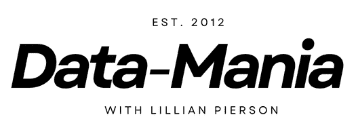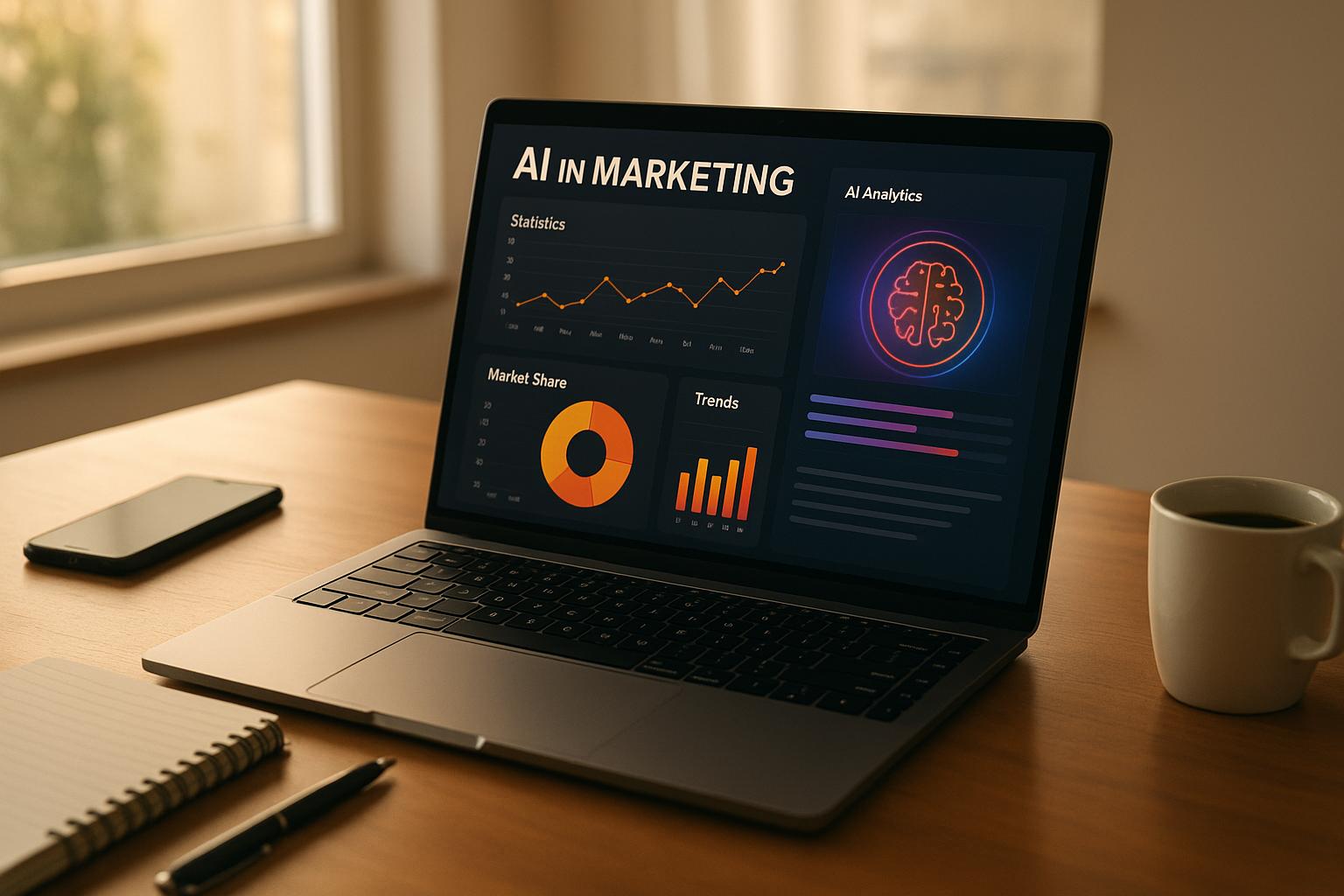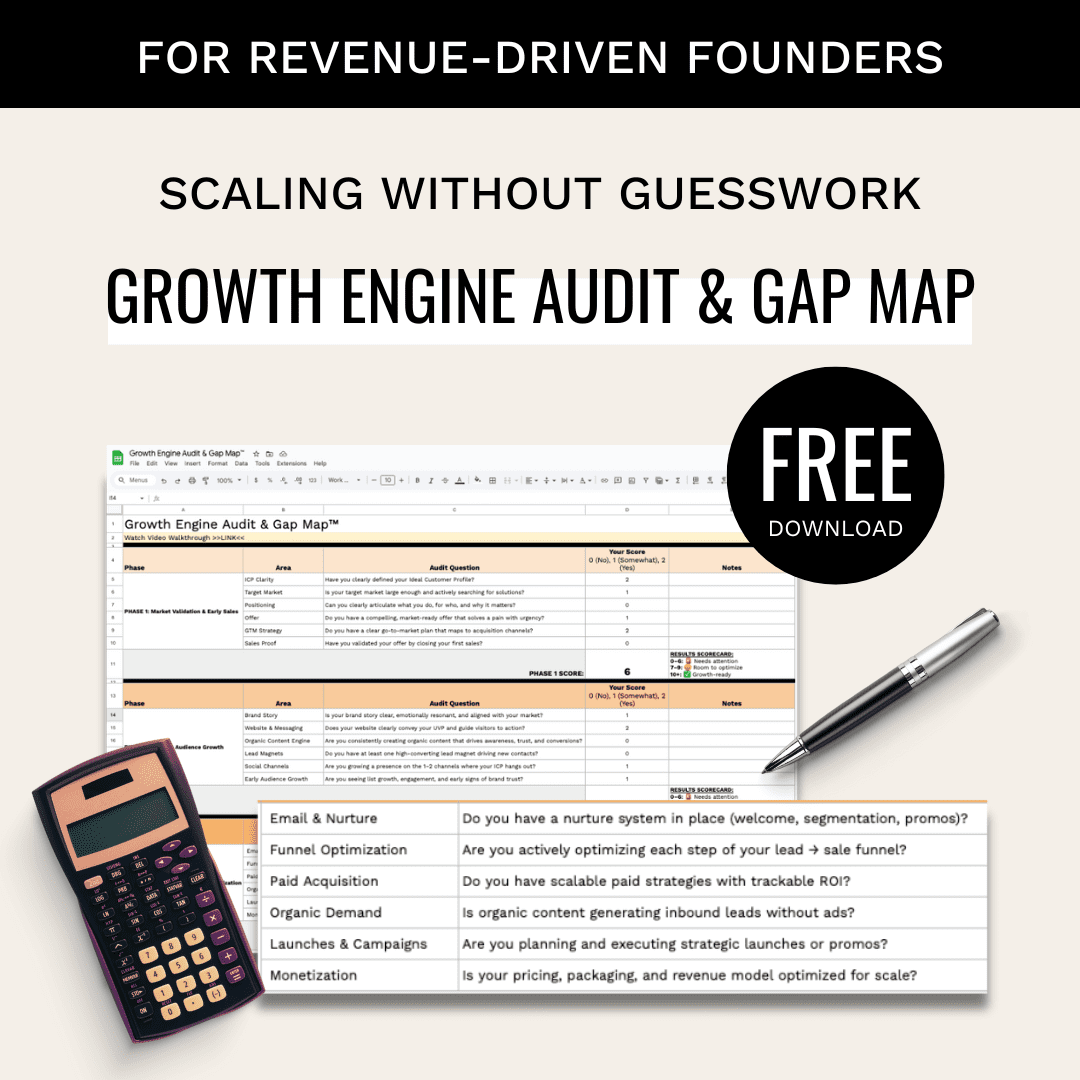Artificial intelligence (AI) is transforming marketing by helping businesses save time, make data-driven decisions, and improve results. Here are 5 practical AI tools you can use today to enhance your marketing strategies:
- Salesforce Einstein: Automate lead scoring to focus on high-conversion prospects. Example: Grammarly increased marketing qualified lead conversions by 30%.
- HubSpot Content Remix: Repurpose content across multiple channels effortlessly. Example: CRO:NYX Digital turned a blog into a full email and social campaign.
- Meta AI Sandbox: Test ad variations using AI-generated copy, visuals, and formats. Example: Monos reduced cost per purchase by 58%.
- Drift AI: Use conversational landing pages to boost lead conversions. Example: Twilio improved site-visit-to-meeting conversions by 150%.
- Google Analytics Predictive Audiences: Identify and target customers at risk of leaving. Example: McDonald’s Hong Kong increased revenue by 560%.
These tools are affordable, easy to use, and designed to deliver measurable results without requiring deep technical expertise. Start small – pick one tool, integrate it into your strategy, and track your outcomes.
1. Salesforce Einstein: Predictive Lead Scoring for Enterprise Sales
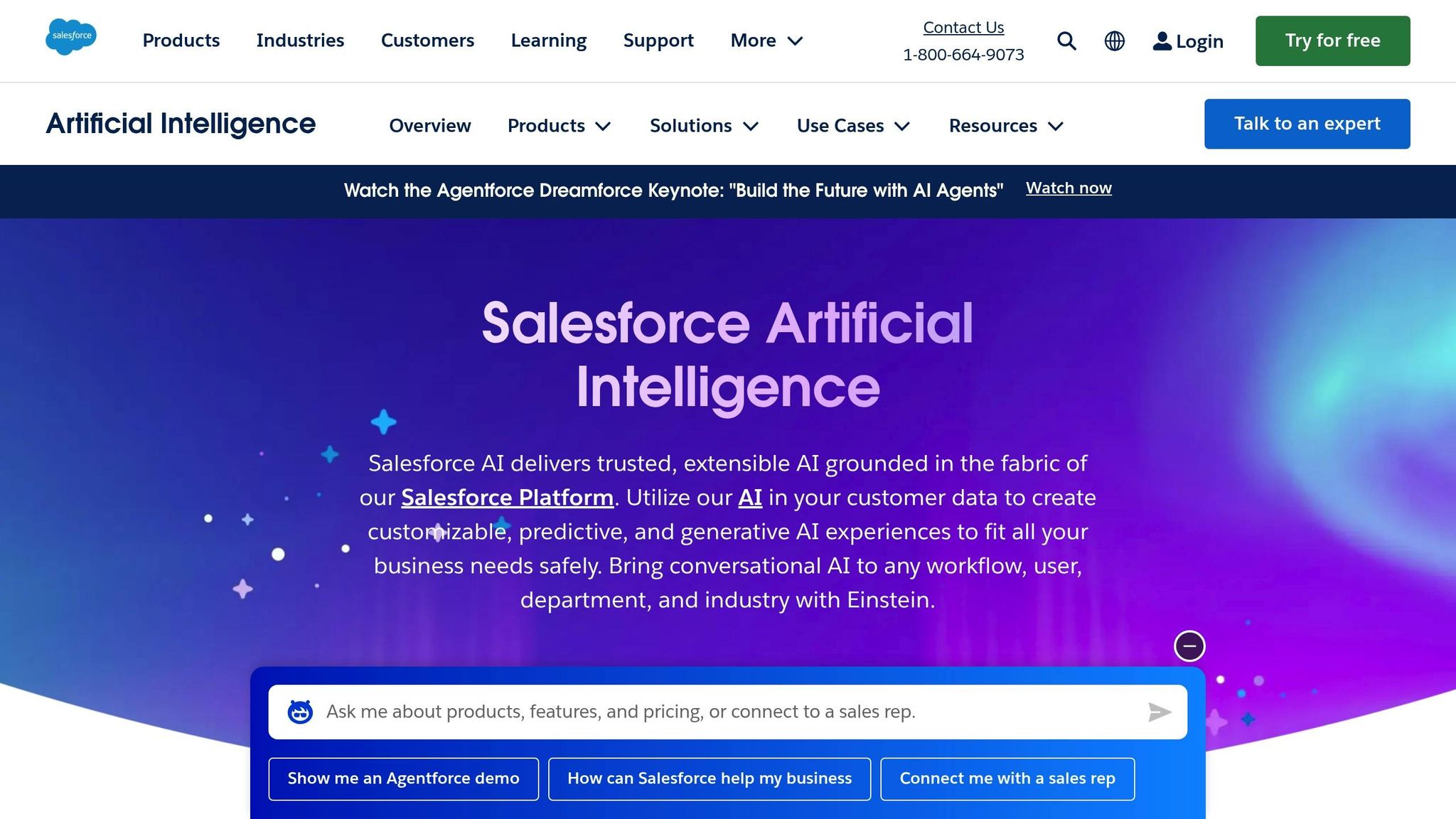
Specific AI Tool or Platform Used
Salesforce Einstein is a game-changer for enterprise sales, using machine learning, natural language processing (NLP), and predictive analytics to streamline lead scoring and other tasks. Its Einstein Lead Scoring feature, integrated into Sales Cloud and Marketing Cloud Account Engagement, automatically evaluates leads by analyzing historical conversion data. The results are presented through a user-friendly dashboard that provides clear insights.
Marketing Function Served
Einstein Lead Scoring takes the guesswork out of lead qualification. By identifying patterns in data, it helps sales teams zero in on high-conversion prospects while creating a shared understanding of what constitutes a qualified lead. This alignment bridges the gap between marketing and sales, making collaboration more effective.
Demonstrated Business Impact
Grammarly’s experience with Einstein Account Insights is a prime example of its potential. By scoring leads based on user activity and engagement levels, Grammarly achieved a 30% increase in marketing qualified lead conversions and an 80% boost in customer upgrades.
"We’ve increased our conversion rates between marketing and sales leads, and it’s really built trust between the two teams."
- Kelli Meador, Senior Marketing Operations Manager, Grammarly
On a broader scale, predictive lead scoring has been shown to improve sales efficiency by 30%, increase conversion rates by up to 20%, and earn the trust of 98% of sales teams who recognize its value.
Actionable Steps to Replicate the Strategy
- Define Your Ideal Customer Profile (ICP): Identify the traits and behaviors of your most valuable leads, including demographic details, firmographic data, behavioral trends, and common challenges.
- Organize and Clean Your Data: Consolidate and clean up data from your Salesforce CRM, marketing automation tools, and website analytics to ensure accuracy.
- Enable Einstein Lead Scoring: Activate the tool in Salesforce Setup and configure it to prioritize data points that align with your ICP.
- Track and Tweak Regularly: Keep an eye on lead performance metrics and adjust scoring criteria as needed to stay aligned with your goals.
Salesforce Einstein Lead Scoring starts at $50 per user per month, with pricing scaling based on your organization’s size and feature needs.
2. HubSpot Content Remix: AI Campaign Repurposing
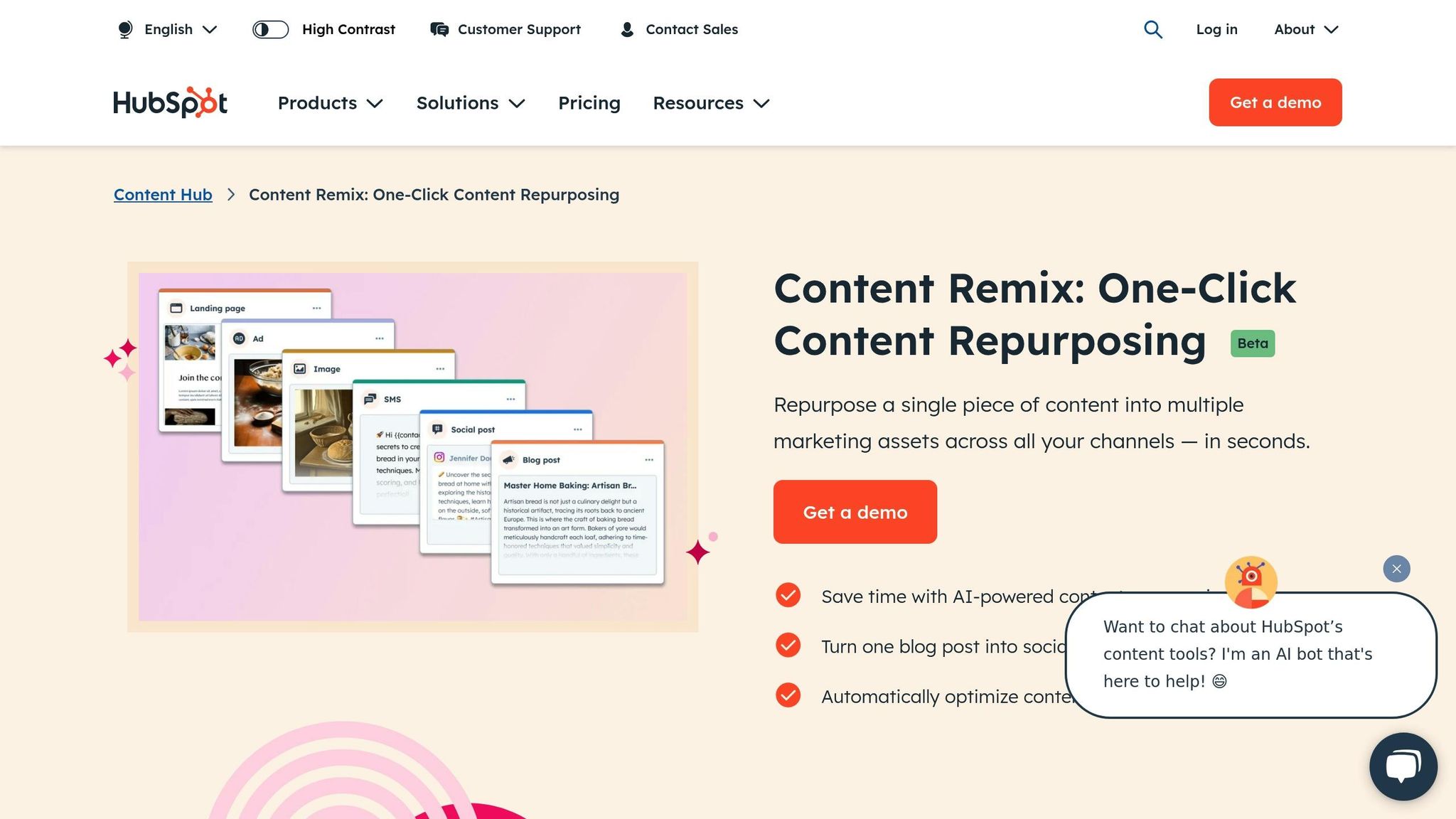
Specific AI Tool or Platform Used
HubSpot‘s Content Remix, part of the Content Hub suite, is a built-in tool designed to transform existing content into multiple formats tailored for various marketing channels. By analyzing existing assets, it can repurpose blog posts, videos, and landing pages into content suited for social media, email campaigns, and ads. This tool simplifies the process of adapting content while tackling common marketing challenges head-on.
Marketing Function Served
Content Remix focuses on making multi-channel content repurposing easier. It evaluates performance data and audience behavior to suggest which content variations are likely to generate the most engagement.
Demonstrated Business Impact
The impact of AI-driven tools like Content Remix has been substantial. Research shows that 85% of marketers believe AI improves content quality, while 82% say it boosts efficiency in content creation. Companies using AI-powered personalization tools, including Content Remix, have reported sales increases of 10% or more. A practical example comes from November 2024, when CRO:NYX Digital utilized Content Remix to turn a blog post into an email and social media campaign. They also repurposed a 10-minute testimonial video into 20-second clips optimized for TikTok and YouTube.
"You can put a webinar into Remix and get content for emails, blogs, and socials, all formatted for the channel you need." – Lisa Rigas, KLA’s marketing strategist and AI expert
Similar to Salesforce Einstein, HubSpot Content Remix showcases how AI can reshape marketing workflows and strategies.
Actionable Steps to Replicate the Strategy
Want to harness Content Remix for streamlined content repurposing? Here’s how:
- Enable AI features and select top-performing content: Activate generative AI in your HubSpot settings and choose high-performing blog posts, landing pages, or videos.
- Access Content Remix: Navigate to Content > Remix and upload your chosen material.
- Pick output formats: Select up to six formats, such as social media posts, email campaigns, SMS messages, ad copy, blog posts, images, or website content.
- Customize and review: Tailor the tone, style, and target audience for each platform. Then, review and edit the AI-generated content to ensure it aligns with your brand before publishing.
- Monitor performance: Use HubSpot’s analytics tools to track how each piece performs and refine your strategy based on the results.
Content Remix is available in HubSpot’s Content Hub Professional and Enterprise plans.
"Content Remix eliminates the need to manually reformat or recreate assets. Its automated features allow marketers to repurpose content quickly and efficiently, so you can focus on strategy instead of production." – Rebecca Young
3. Meta AI Sandbox: Automated Ad Variation Testing
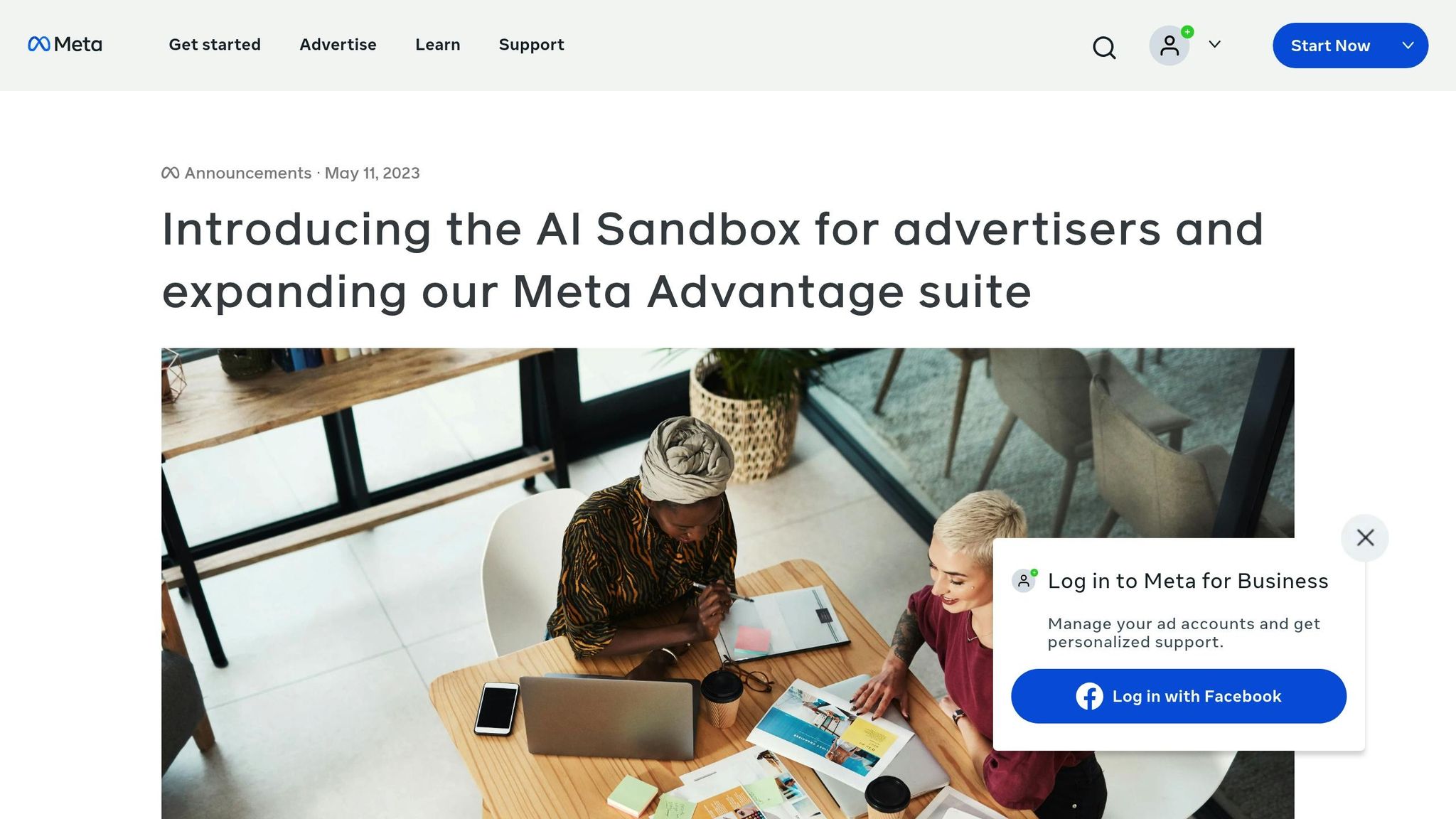
Specific AI Tool or Platform Used
Meta AI Sandbox offers advertisers a suite of generative AI tools tailored to enhance ad campaigns across Meta platforms. This testing environment includes three standout features:
- Text Variation: Generate multiple versions of ad copy.
- Background Generation: Create diverse visual backdrops for ads.
- Image Outcropping: Adjust creative assets to fit various aspect ratios seamlessly.
These tools streamline the process of crafting ad copy, designing visuals, and optimizing images, making it easier for marketers to test and refine their campaigns.
Marketing Function Served
The Meta AI Sandbox is designed to simplify and speed up ad variation testing. Whether it’s crafting compelling ad copy, experimenting with different visual themes, or ensuring images are properly formatted, this platform allows marketers to quickly generate and assess multiple ad versions. The result? A more efficient way to identify what resonates most with audiences.
Demonstrated Business Impact
Brands using Meta’s AI-driven tools have reported measurable improvements in performance and cost savings. For instance:
- Monos, a luggage brand, used a Meta Advantage+ shopping campaign and saw a 58% reduction in incremental cost per purchase and a 35% boost in incremental return on ad spend.
- Jenny Bird, a women’s jewelry brand, experienced a 14% drop in cost per purchase and a 17% rise in conversions after integrating Meta Advantage+ with its campaigns.
Additionally, a Meta beta survey revealed that over half of marketers believe generative AI could save them up to five hours per week. Meta highlighted the significance of this, stating, “Five hours a week equals one and a half months a year, which is significant!”.
"We’re seeing the rapid monetization of AI tools that support both advertising and search, being driven largely by the owners of the large language models these applications are built on."
- Nicole Greene, Analyst at Gartner
These results showcase how Meta AI Sandbox facilitates faster and more effective ad experimentation.
Actionable Steps to Replicate the Strategy
- Experiment with Text Variation: Use the text variation tool to create multiple versions of your ad copy and conduct A/B testing to identify what works best.
- Explore Visual Options: Leverage the background generation feature to test different visual settings and evaluate their impact on ad performance.
- Format Assets for Every Platform: Utilize the image outcropping tool to ensure your creative assets are perfectly sized for all Meta platforms.
- Access Early Tools: Join Meta’s "Early Release" program through Ads Manager to preview and customize these features.
- Keep Human Oversight: Regularly review AI-generated outputs to maintain quality and alignment with your brand’s goals.
Meta plans to expand access to these tools, eventually embedding them directly into its core advertising products. This move promises even more streamlined ad creation and testing capabilities in the future.
4. Drift AI: Conversational Landing Pages for Tech Demos
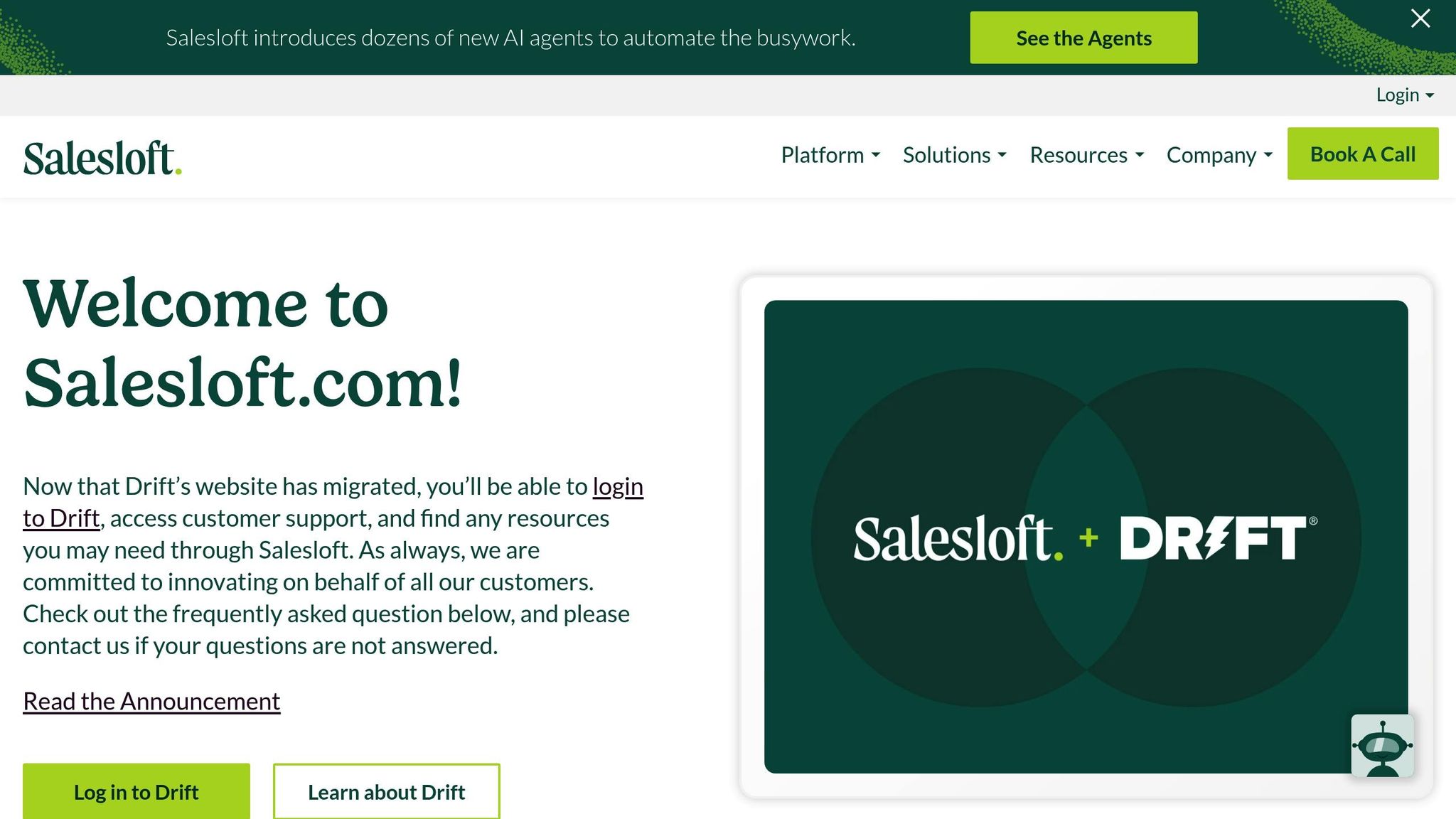
Specific AI Tool or Platform Used
Drift AI is a conversational marketing platform designed to transform static landing pages into dynamic, interactive experiences. By leveraging AI chat agents, its Conversational Landing Pages (CLPs) feature connects visitors with real-time conversations, eliminating the need for traditional form fills. The platform uses account data to identify and score high-intent buyers instantly, delivering personalized chat experiences that help convert leads. With free-text responses, Drift creates natural, human-like interactions, making it easier to engage visitors and turn them into measurable leads.
Marketing Function Served
Drift AI is a game-changer for lead qualification and conversion optimization, particularly for B2B tech companies. It operates around the clock, capturing leads 24/7 to ensure no opportunity is missed. The platform intelligently routes qualified leads into prioritized sales workflows, while also providing instant, tailored answers to visitors’ questions. This approach reduces drop-off rates and accelerates the sales process by allowing prospects to schedule meetings or start live chats whenever they’re ready.
Demonstrated Business Impact
Companies using Drift AI for conversational landing pages have seen notable results:
- EAB (Education Advisory Board) boosted demo requests by 120% in 2022. Within just two months, after additional AI training, response accuracy increased from 80% to 95%.
- Twilio achieved a 150% improvement in site-visit-to-meeting conversion rates in two months, along with an 80% open rate and a 20% response rate for automated emails and live chats tailored to visitor intent.
- Okta reported a 30% quarter-over-quarter increase in pipeline influence during its first six quarters, while doubling the conversion rate from MQL to SQL. Drift became its fastest-performing channel for converting marketing-qualified leads.
"Drift has turned into the number one channel for high-intent leads."
- Heather Alter, Senior Director of Web Experience
- Adobe used Drift’s conversational AI to guide customers toward relevant solutions, resulting in an additional $10.8 million in revenue.
Actionable Steps to Replicate the Strategy
To replicate Drift’s success, start with their crawl-walk-run method for AI chat implementation. Begin by training the AI on real conversations from your sales and support teams. Roll out the functionality gradually, focusing on specific sections of your website rather than deploying it site-wide all at once.
Customize chat playbooks to match visitor intent:
- Trigger live sales interactions for high-intent visitors.
- Use qualification chatbots for medium-intent visitors.
- Direct low-intent visitors to helpful resources or nurturing content to build interest over time.
Additionally, train the AI on your company’s specific topics to improve relevance and accuracy. EAB’s success, for instance, stemmed from refining the AI to better understand their unique value propositions and customer questions. Finally, set up native integrations to alert sales teams when targeted accounts are actively browsing your site. This allows for immediate, meaningful conversations that can shorten sales cycles and enhance the customer experience.
sbb-itb-e8c8399
5. Google Analytics Predictive Audiences: Churn Risk Modeling
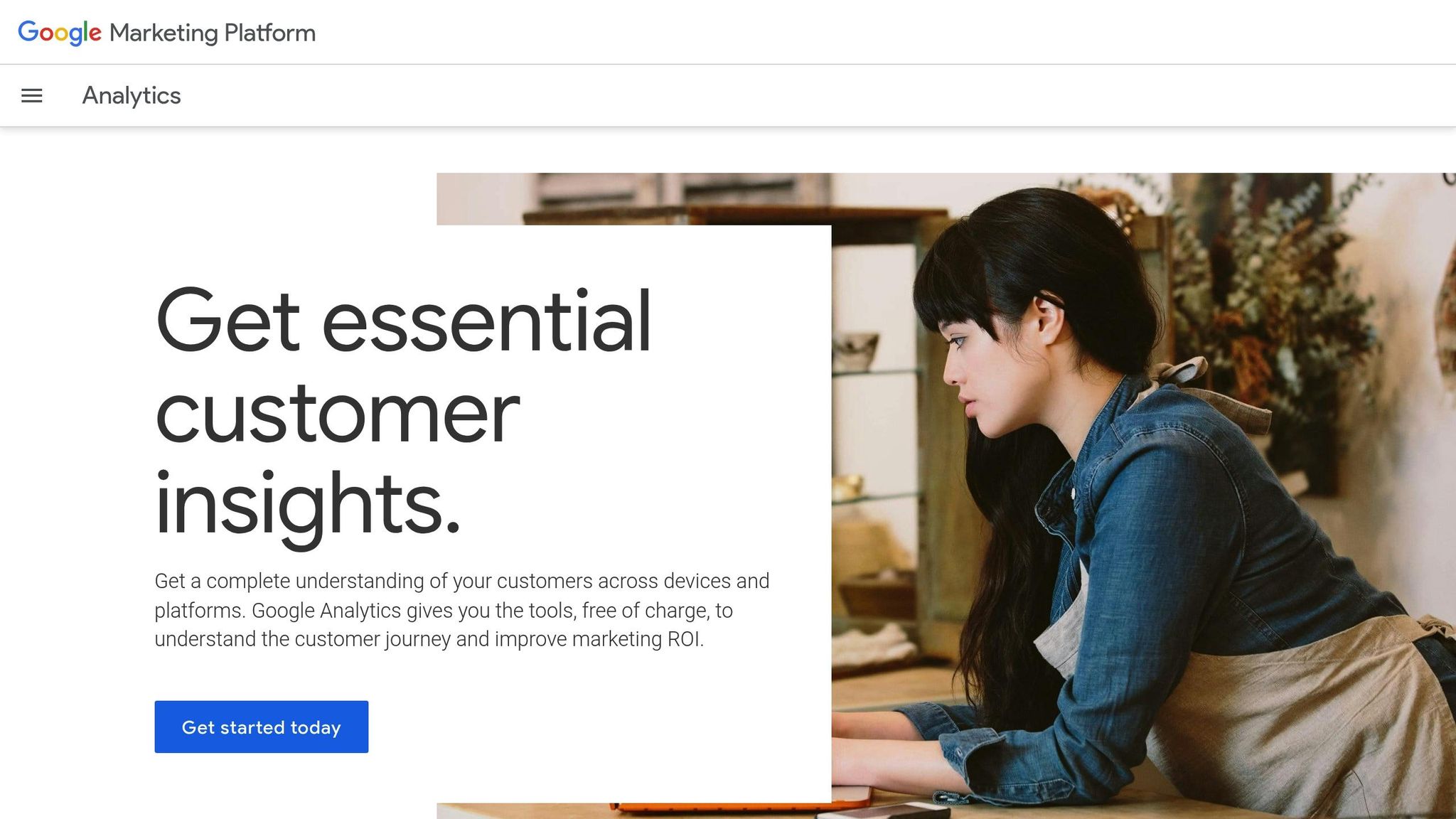
Specific AI Tool or Platform Used
Google Analytics 4 (GA4) uses machine learning to predict customer churn through its Predictive Audiences feature. This tool focuses on identifying churn risk by analyzing user behavior patterns to forecast future actions. GA4’s "Churn Probability" metric estimates the chance that users who were active in the past 7 days will not return within the next 7 days.
For the churn probability model to work effectively, GA4 requires a significant amount of data. Specifically, it needs at least 1,000 returning users and 1,000 users who didn’t return during a seven-day period within the last 28 days.
Marketing Function Served
GA4’s predictive audiences turn traditional marketing on its head by enabling proactive customer retention. The platform creates a "Likely 7-day churning users" audience, helping marketers identify customers at risk of leaving. This shift allows brands to act early and prevent churn, rather than trying to win back customers after they’ve already left.
With this tool, retargeting campaigns become more strategic. Instead of casting a wide net, marketers can zero in on users showing early signs of disengagement. By focusing resources on these at-risk customers, businesses can craft tailored messages, offer timely discounts, or provide personalized incentives to re-engage them. This data-driven approach makes retention efforts more precise and effective.
Demonstrated Business Impact
Companies leveraging GA4’s predictive audiences for churn modeling have seen impressive outcomes. For instance, ASDA, a UK-based retailer, reported an 84% increase in return on ad spend (ROAS) and a 48% reduction in cost-per-acquisition after adopting GA4’s predictive audiences for their retargeting campaigns.
"We’ve advanced our skills in this space by using GA4’s predictive audiences and developing our own first-party data to unlock further growth for ASDA."
- Georgina Riby, Senior Manager – Performance Media, ASDA
McDonald’s Hong Kong achieved even more striking results. Within just two months, they increased conversions by 550% for "likely 7-day purchasers", reduced cost-per-action by 63%, and boosted revenue by 560% for this audience segment.
"Google Analytics 4’s machine learning capabilities allow us to transform our digital advertising strategy efficiently and effectively by leveraging its out–of-the-box solution."
- Kai Tsang, Senior Director Digital Customer Experience, McDonald’s Hong Kong
Actionable Steps to Replicate the Strategy
To get started, ensure GA4 meets the necessary data thresholds and enable "Modeling contributions & business insights" to enhance predictions. Verify that your ‘purchase’ event is correctly set up and maintain steady traffic generating purchase events over a 28-day period.
Use GA4’s pre-built "Likely 7-day churning users" template to create your first predictive audience. For example, Cool Hats Apparel uses this audience to identify customers at risk of leaving and targets them with time-sensitive promotions or discounts to encourage immediate engagement.
Integrate your predictive audiences with Google Ads for automated remarketing. Continuously monitor and refine your campaigns based on conversion data. To maximize impact, focus on high-value customers by creating custom audiences that combine churn probability with factors like purchase history or engagement levels. These steps can help you build a more effective retention strategy moving forward.
25 TOP Use Cases For AI In Digital Marketing
Conclusion
These five examples of artificial intelligence in marketing highlight how AI can deliver measurable results. From predictive lead scoring to churn risk modeling, each case study showcases how AI can revolutionize specific marketing tasks without requiring deep technical expertise. They provide a solid foundation for launching your own AI-driven strategies.
AI-powered campaigns can achieve 20-30% higher ROI. But success starts with data quality. Andrew Ng stresses that 80% of AI work involves data preparation, and for good reason – accurate, complete, and consistent data is critical. In fact, 83% of business leaders acknowledge its importance.
The good news? With high-quality data and affordable tools, experimenting with AI is easier than ever. Many AI platforms now offer freemium plans or pricing as low as $12 per month, making it possible to test and refine your strategies with minimal risk.
Start small. Pick one tool – whether for content repurposing, ad testing, or conversational landing pages – and refine it using consistent performance data. The marketing world is evolving quickly, with 88% of marketers agreeing that increasing automation and AI usage is essential to staying competitive. As Kerry Harrison, an AI educator and copywriter, puts it:
"There’s still a huge need for human writers – for human creativity, for human thought and strategy – and to come to these models with our own objectives and our own ideas".
The case studies above demonstrate how AI can simplify workflows and improve ROI. Take that first step today. Choose one AI tool or strategy, integrate it into your campaigns, and start seeing the results for yourself.
FAQs
How can small businesses easily use AI tools to improve their marketing without technical expertise?
Small businesses can tap into the power of AI tools to boost their marketing efforts by starting with straightforward, easy-to-use platforms that don’t require technical expertise. Tools like these can handle tasks such as writing ad copy, scheduling social media posts, or analyzing customer data to create personalized marketing campaigns.
To keep things budget-friendly, look for platforms that offer free or low-cost plans. These often include features like content creation, email campaign optimization, and audience segmentation. This way, businesses can test the waters and gradually incorporate AI into their marketing strategies without straining their resources. By starting small and scaling up as they grow, even teams without tech skills can achieve noticeable results with AI-powered marketing.
What are the best ways to ensure your data is accurate and reliable when using AI tools in marketing?
To make sure your data stays accurate and dependable when using AI tools in marketing, start by cleaning and standardizing your data regularly. This involves getting rid of duplicates, fixing errors, and keeping formats consistent. The cleaner the data, the better the AI can perform.
Also, set clear data quality standards that emphasize accuracy, completeness, relevance, and timeliness. These standards help reduce mistakes and lead to better decisions.
Lastly, take advantage of AI-powered tools to automate data quality management. These tools can spot and correct inconsistencies, boosting data integrity and giving your campaigns a stronger foundation. By taking these steps, you’ll get the most out of AI in your marketing strategies.
How can businesses evaluate the success of AI-powered marketing strategies and ensure they deliver strong ROI?
To gauge the effectiveness of AI-driven marketing strategies and ensure they yield a solid return on investment, businesses need to begin with specific goals and measurable KPIs that align with their broader marketing plans. Metrics like conversion rates, customer lifetime value, engagement rates, or revenue growth can serve as essential indicators, helping to directly link AI efforts to performance outcomes.
But it’s not just about surface-level stats like click-through rates. Businesses should also consider the bigger picture, such as time or cost savings and enhanced customer experiences. For instance, AI tools that simplify content creation or tailor customer interactions can lead to noticeable improvements in efficiency and satisfaction. By regularly reviewing these metrics and fine-tuning approaches, companies can ensure their AI investments stay impactful and continue to deliver meaningful results.
Related Blog Posts
- AI Agents in Marketing: The Secret to Driving 10x Engagement & Conversions
- 5 Ways AI Can Optimize Marketing ROI for your Tech Startup
- AI Growth Marketing: Forecasting Use Cases
- Top 10 AI Marketing Tools To Skyrocket Your Growth In 2025
